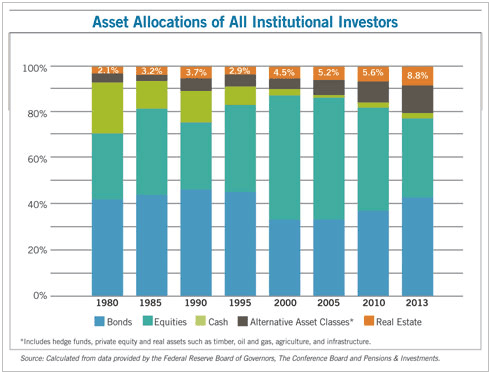Single Tenant NNN Lease Valuation Model (Updated May 2025)
I originally built this single tenant net lease (NNN) valuation Excel model back in 2016. Based on some feedback from a few of our readers, I’ve since made quite a few updates (see v2.0 updates video below). This model is an attempt to re-think how the industry underwrites single-tenant net lease investments.
The model is different from your typical discounted cash flow model (DCF) in that I use three discount rates rather than one. This is to account for the varying risk profiles of the credit, speculative, and residual cash flow of your typical single tenant net lease (STNL) investment. I also include modules to calculate an appropriate discount rate for the credit-based cash flows and to value the building at the end of the lease term.
Note: In version 2.2-2.4, a robust acquisition capability was also added to this model. It can now accommodate both general valuation, as well as acquisition analysis.

What is an STNL Investment?
For purposes of this post, I use single tenant net lease and single tenant NNN lease interchangeably. I’m referring to properties out-fitted/built to be occupied by one specific tenant. That tenant is a credit tenant, meaning one of the major credit rating agencies (S&P, Moody’s, Fitch) has assigned a rating to the long-term debt of the corporation guaranteeing the lease.
A few common examples of STNL investments include fast food restaurants (McDonald’s, Taco Bell), corner pharmacies (Walgreens, CVS), banks (Chase), urgent care facilities, and corporate headquarters.
Sometimes the investor only owns the land (ground lease) and other times he also owns the building (fee interest). The tenant is responsible for 100% of the operating expenses of the property and generally pays most of those expenses directly.
Oftentimes, the tenant is also responsible for the upkeep of the building (CapEx), which is referred to as an absolute net lease. So for the investor, these deals can be quite attractive. Just sit back and collect a check each month from a creditworthy tenant on a long-term lease.
The Risk/Opportunity of Investing in Single Tenant Net Lease Deals
Now, if you’ve spent any time in real estate you’ve come across more than a few single tenant net lease deals. With interest rates below historic average levels, these deals have become especially popular among the independent investor crowd – many nearing retirement – as an alternative to stocks, bonds, CDs, and money market accounts.
The STNL investor often has little to no real estate expertise, but is enticed by the steady monthly income and low-maintenance aspects of the investment.
The issue is, with limited experience these investors too often buy a low cap rate based on the quality of the in-place income without considering the investment’s future value when the credit tenant vacates and cash flows become less secure.
They think they’re getting into a simple, safe investment and they’re not necessarily wrong – STNL investments are far less management intensive. But more financial scrutiny needs to be made at the outset to be sure the investor is not overpaying for the investment. Therein lies the importance of a robust valuation model.
Basics of My Single Tenant Net Lease Valuation Model
So enough with the sidebar, let’s get to the model. I first describe the basics of the model for the benefit of those who can’t access Youtube. I then post a video describing the model more in depth.
The Excel model is organized into two assumption (inputs) tabs, two calculation tabs, two report tabs, and one data tab. All inputs on the assumption tabs flow to the calculation tabs. The outputs from the calculation tabs flow to the report tabs where the results of the analysis are displayed. As always, the model is built with blue font for input cells with the expectation that the user not change non-blue font cells.
- Assumptions (inputs) tabs include:
- A summary tab for describing the investment including specifications, photo, location map, and strengths/weaknesses
- An inputs tab for inserting the financial inputs of the investment including timing, income, expenses, and residual value calculation
- Calculation tabs include:
- Calculations are performed on the Investment Returns and Valuation tabs.
- Calculations are done in monthly periods, and then rolled up into annual periods.
- Returns are calculated based on monthly periods
- Report tabs include:
- Valuation metrics are reported on the Valuation tab
- Property pro forma and return metrics are reported on the Investment Returns Tab
- Data tab
- The data tab includes data validation lists for property and subproperty type plus credit rating agencies and grades
- Also includes a credit matrix for assigning discount rates to various credit ratings
I think you’ll enjoy the model. It really got me thinking, and I’m excited to someday use it on a real deal. As always, please verify the formulas and methodology before using this model on a live deal. I haven’t used it professionally and there may well be errors needing to correct. If you find something needing change or just want to say hello, please don’t hesitate to reach out.
Happy modeling!
How the Model Works – Video Walkthrough (v1.0)
Note that the video uses version 1.0. The version you download will look slightly different.
What’s New in Version 2.0 – Walkthrough
In this video, I walk you through what changed between v1.0 and v2.0 of the Single Tenant Net Lease Valuation Model.
Changing Property Type and Sub-Property Type Drop-Down Menus
I recently created a tutorial for how to create dynamic drop-down menus in Excel. In that tutorial, I featured the Property Type and Sub-Property Type inputs in this model as an example of how to create dynamic drop-down menus.
However, that same tutorial does a great job of teaching users of this STNL Valuation model how to change the values that you see in the Property Type and Sub-Property Type menus on the Summary tab. So I thought I’d also include that video here for your reference.
Download the Single Tenant NNN Lease Valuation Model
To make this model accessible to everyone, it is offered on a “Pay What You’re Able” basis with no minimum (enter $0 if you’d like) or maximum (your support helps keep the content coming – typical real estate DCF models sell for $100 – $300+ per license). Just enter a price together with an email address to send the download link to, and then click ‘Continue’. If you have any questions about our “Pay What You’re Able” program or why we offer our models on this basis, please reach out to either Mike or Spencer.
We regularly update the model (see version notes). Paid contributors to the model receive a new download link via email each time the model is updated.
Bonus: Automate Your STNL Investment Analysis with Our Custom GPT
Manually filling out the STNL Valuation model can be time-consuming and complex. To streamline this process, we have also built a custom GPT that can automate the populating of the inputs in the model. If you are a paid ChatGPT user, you can use our STNL Valuation Model custom GPT to:
- Get Started Quickly: Through a 7-step process, either upload an offering memorandum or manually answer questions to provide the AI with the necessary inputs.
- Accurate and Efficient: The GPT updates the Excel model for you, ensuring accuracy and saving you valuable time.
- User-Friendly: Ideal for users who may be less familiar with complex financial models, the GPT simplifies the entire process.
Click here to find instructions for accessing and using this GPT by A.CRE (Note that as of May 2024, this tool is only available to paid ChatGPT users).
Frequently Asked Questions about the Single Tenant NNN Lease Valuation Model
Version Notes
v2.8
- Various updates to placeholder values for 2025
v2.7
- Fixed placeholder formula in Inputs G30 – had been referencing incorrect cells
- Numerous updates to placeholder values
v2.6
- Added Return Summary section to ‘Summary’ tab
- Rearranged values in ‘Property Description’ section on Summary tab
- Added ‘Analysis Period’ value on Summary tab (G17)
- Moved ‘Measurement Type’ input to G6 on the Summary tab
- Moved ‘Legal Interest’ into the Property Description section of the Summary tab
- Modified default formula for Residual Month input; now defaults to a max of 10 years rather than to max of lease term; continues to be a required input
- Various updates to placeholder values for 2024
v2.5
- Fixed issue where General Vacancy was not being calculated correctly on the Investment Returns tab
- Reversed sign of General Vacancy in Residual Pro Forma on Inputs tab to mirror methodology on Investment Returns tab
- Added ‘Residual Month’ input on the ‘Inputs’ tab (cell F9) to allow the analysis end date to differ from the lease end date
- Various updates to placeholder values
- Misc. formatting changes
v2.4
- Removed CapEx from NOI calculation on Valuation tab
- Added ‘Lease Summary’ section to Summary tab
- Added ‘Pricing/Valuation’ section to Summary tab
- Added ‘Year 1 Net Operating Income’ output to Inputs tab (cell G24)
- Revised Summary page layout
- Update retail, office, and industrial sub-property type categories to match CREXI
- Fixed charts on Summary tab
- Misc. updates to default assumptions
- Various formatting enhancements and fixes
v2.3
- Added ‘Project Cost vs. Present Value’ graph to Summary tab
v2.2
- Added ‘Leasehold’ as an ownership interest option on the Summary tab
- Inserted ‘Partition of PV’ pie chart; necessitated creating four named ranges
- Inserted ‘Contract vs. Speculative’ Income stacked column chart
- Inserted ‘Key Return’ metrics column chart
- Updated Summary page print range
- Added ‘/SF metric to Loan Amount
- Misc. formatting changes
v2.1
- Changed the name of Imputed Cap Rate (Valuation tab) to ‘Yield-on PV’
- Added ‘Going-in Cap’ output on the Summary tab
v2.0
- Removed $USD to accomodate non-US analysis
- Created option to use either SF or M2 (F11 of Summary tab)
- Added Conditional Formatting on Inputs tab to make modeling custom lease rate more intuitive
- Moved month end in header from day 1 to last day of month on Investment Returns and Valuation tabs
- Updated 10-yr UST rate
- Moved assumptions from Investment Returns tab to Inputs tab
- Changed Option Rent assumption to Rent/SF/Yr or Rent/M2/Yr rather than Rent/SF/Mo
- Updated print ranges for Summary and Input tabs
- Misc. formatting updates and enhancements
v1.2
- Fixed formulas erroring out issue when analysis start month is later in year than lease start month
- Added Average Free and Clear Return (CFO ÷ Invested Capital) metric to Investment Returns tab
- Added Average Cash-on-Cash Return (CFAF ÷ Equity Invested) metric to Investment Returns tab
v1.1
- Added print areas to Summary and Inputs tabs
- Misc formatting
- Improved custom rent module to allow for mid-year bumps
- Fixed an issue with the custom rent PSF date header (Inputs tab)









